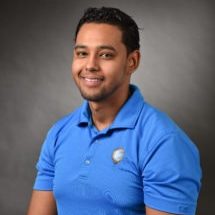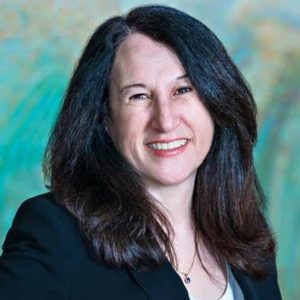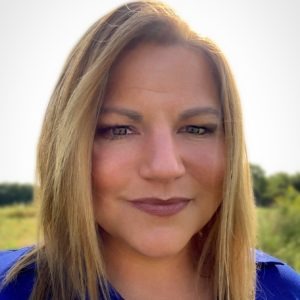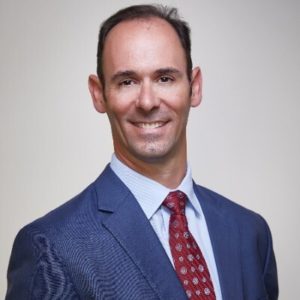View From the Trenches: Interview with Michael Wasserman, MD, CMD
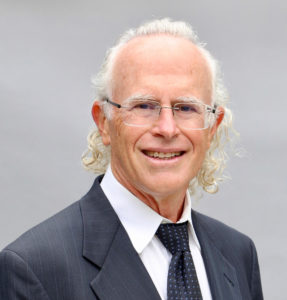
Michael Wasserman, MD, CMD
Dr. Michael Wasserman is an ardent proponent of improving the quality of life for our nation’s seniors. He is an outspoken critic of certain aspects of our current healthcare system and has offered positive alternatives that would result in both saving lives and improving the quality of lives of residents in skilled nursing facilities (SNFs).
He’s been interviewed and/or quoted by papers from coast to coast, such as the Los Angeles Times and the Washington Post, as well as just about every health care publication focused on senior care, especially SNFs. Additionally, he has held a number of diverse and significant leadership roles in the post-acute and long-term care sector.
AH: I’m sure our readers would enjoy hearing your perspective on a host of issues as well as your suggestions for how we can improve the current health care situation for residents in SNFs. I guess a good place to start is your background. Can you tell our readers something about how you got started in geriatric medicine and some of the positions you have held?
MW: During my third year in medical school, in 1983, I realized that I wanted to spend my career in geriatric medicine. That led me on a path where I did a geriatric fellowship. I became board certified in internal medicine with a specialty in geriatrics. In addition, I have been working in nursing homes for roughly the past 30 years.
I opened Kaiser-Permanente’s first Geriatric Outpatient Consult Clinic and did program development for Kaiser for five years before I moved to Colorado, where I opened a hospital outpatient geriatric clinic. I ultimately became President and Chief Medical Officer of the geriatric medical management company that managed the clinic, before going into private practice. Our private practice became the largest of its kind in the country before we sold it.
About six years ago, I become the Director of the nursing home arm of California’s Medicare QIN/QIO. Subsequent to that I the position of Chief Medical Officer (CMO) of the largest chain of nursing homes in California. I was later promoted to the CEO of that large California-based nursing home chain. So, from the time I was in medical school to the present, my focus and my passion has been geriatric medicine.
AH: You are the immediate Past President of the California Association of Long-Term Care Medicine (CALTCM). Can you describe some of the activities of the CALTCM that took place under your leadership?
MW: I am very proud that under my leadership CALTCM took ownership of the leadership and management in geriatrics (LMG) training program that UCLA ran for about two decades. One of the things we did was to develop a nursing home specific version of the program. It was focused on a facility leadership team composed of the Nursing Home Administrator (NHA), Director of Nursing (DON), Medical Director, and the Director of Staff Development (DSD), all critical roles in effectively running a nursing home.
One of the purposes of what we developed was to encourage the full engagement of medical directors of nursing homes. That is perhaps even more important today than ever before. As we have seen, today’s nursing homes are yesterday’s hospitals. We are caring for sicker people. It is not uncommon to see a resident with multiple conditions and comorbidities who presents with complex and challenging medical problems. We cannot expect a nursing facility to be led by a nursing home administrator who lacks any semblance of a clinical background. That is one of the reasons why I developed a program that focused on not just the medical director but the key members of the leadership team.
AH: As a member of California’s Community Vaccine Advisory Committee, what are some of your – and the Committee’s – objectives?
MW: My objective was and remains to represent the voice of long-term care. One of the things I have seen in the last 11 months is that a lot of the approaches to long-term care policy are stakeholder-driven. I consider CALTCM to be a subject matter expert, more than a stakeholder.
While many committees are put together to allow various stakeholders to have a voice, which is important, we need subject matter experts, such as highly trained medical directors, attending physicians, and other leaders who have current and extensive clinical experience. We learned, albeit too late in some cases, that during the COVID-19 pandemic you need the full engagement at the medical director level as subject matter experts. In order to effectively deal with the pandemic, there should be experts in the room adjusting policies, as needed, on a day-to-day basis in response to what is happening on the ground.
AH: Do nursing facilities have an obligation to educate all staff about the importance and benefits of the various vaccines?
MW: Absolutely! Nursing facilities should be making education about the importance of vaccines one of their highest priorities. Unfortunately, we witnessed the devastation in 2020 when so many tens of thousands of residents and hundreds of staff died because of a lack of a vaccine, notwithstanding the fact that the Pfizer and Moderna vaccines weren’t available until December of 2020 when the FDA issued an Emergency Use Authorization (EUA). One of my mantras is, “Don’t complain, bring me solutions.” One of the solutions is to educate folks about the importance of vaccines and CALTCM has been working to develop and present such educational programs.
AH: You have been active with the California legislature advocating for improvements to long-term care. Can you describe some of those activities?
MW: We (i.e., CALTCM) are presently working with various state legislators on a variety of bills geared at improving quality of care in SNFs. Our outreach to state legislators is an important aspect of what we do.
AH: When you lived and practiced geriatric medicine in Colorado, you co-founded Senior Care of Colorado. Please describe that organization and what its mission was/is.
MW: We had a mantra at Senior Care of Colorado, “Every Step of the Way.” We were a clinical practice group of about 30 geriatricians. Our organization was led by geriatricians for geriatricians. We also had 35 nurse practitioners and physician assistants, three social workers, and a wound care nurse. Our primary objective and goal was to provide the highest quality care throughout the entire continuum of care (e.g., hospices, nursing facilities, assisted living, group homes, and home care) in Colorado. We were providing a needed community service. For example, we actually had clinics on site of continuing care retirement communities (CCRC).
Although not directly related to the company I founded, I was also on the Board of the Denver Hospice, Colorado’s largest hospice organization, from the mid-1990s to 2012. So, I have been fortunate to have provided care and leadership as well as helping to develop programs focused on improving the quality of care for seniors on a host of levels.
AH: Among the many leadership hats you wore were your roles as Chief Medical Officer (CMO) and then CEO of the largest nursing home chain in California. What takeaways did you garner from that experience?
MW: One of the things I have learned is that authority is ephemeral. For example, when I was at California’s Quality Improvement Organization (QIO), I learned how to lead without necessarily exercising authority. Being CEO of the largest nursing home chain in California taught me that authority isn’t all it is cracked up to be. I learned how to more effectively communicate without using authority as a hammer.
Towards that end, another of my mantras is to “focus on doing the right thing.” My focus has always been on trying to do the right thing and to do what is best for residents. They depend on us for quality care and I saw my role – both as CMO and later, as CEO, as supporting the health care team with the resources and inspiration they deserve, among other important functions.
The other thing I learned as CEO is not accepting the phrases, “I can’t” and “I won’t.” I recall that some people said we can’t do something “because corporate told us so.” I said, “Wait a minute; I’m corporate and we can and will do that.” When trying to do the right thing, you have to expunge the words “can’t” and “won’t” from your vocabulary. Anything is possible as long as you believe you can accomplish it.
AH: Based on your substantial involvement with post-acute and long-term care over the decades, what are some of the things nursing homes can do to improve resident outcomes?
MW: As the CEO of Rockport, the largest nursing home chain in California, I viewed my role as supporting a three-sided scale consisting of: 1) operations, 2) finance, and 3) clinical services, not necessarily in that order. My job as CEO was to keep my thumb on each side of the scale so they were equal. It is my core belief that you will find very few nursing home chains where clinical services is supported on the same level as the financial and operational aspects of the organization.
I think we have to hold ourselves to a higher standard, and allowing operations and finance to take precedence over the clinical domain leads to poor care. I think that is the key thing the nursing home industry needs to do. Unfortunately, I believe that many companies in the nursing home industry are very far away from that model where clinical services are at least co-equal with the financial and operational aspects.
Further, there are a few additional things I think we really have to focus on. Specifically, enhancing the leadership team in every nursing home is a critical objective.
AH: In your estimation, are there things that the various states and federal government can do that are not currently being done to 1) decrease the risk of COVID-19 in nursing homes, 2) prepare for possible future outbreaks, and 3) generally improve the quality of life of residents?
MW: During the first week of the COVID-19 pandemic, I literally asked myself, “If I were still CEO of a large nursing home chain, what are some of the things I would want to see?” I firmly believe that every nursing home in the country needs a full-time infection preventionist. Although the federal Requirements of Participation for nursing home do not require a full-time infection preventionist, it is now law in California to have a full-time infection preventionist. At CALTCM, we made that recommendation last spring. It really is essential to have a full-time infection preventionist. If we learned nothing else from the tragic pandemic, which ravaged nursing home residents and staff, we recognized the need for competent and quality full-time infection preventionists.
In a similar vein, we have to find a way to increase nurse staffing levels at nursing homes. I understand there are costs involved, but as a clinician practicing in this area for decades, I can tell you that if your levels of nursing staff are low, your outcomes are likely to be worse. More than a few research studies support that premise.
Additionally, I strongly recommend bringing transparency to the nursing home industry. We have to make sure that sufficient money goes towards care. That means it is time for the industry to come to grips with how much money goes to real estate or other areas rather than resident care.
AH: Our readers understand that all nursing homes that participate in the Medicare program must be surveyed every year (or at least not more than every 15 months) and whenever there is a complaint. Those surveys often result in exorbitant civil money penalties, often in excess of $1 million dollars, along with other enforcement actions, such as denials of payment for new admissions. Do you think the survey process is working and if not, what suggestions do you have for improving it?
MW: The survey process definitely needs to be improved. I think we need to get everyone – all stakeholders – in a room and I would volunteer to facilitate this endeavor. We need medical directors, representatives from the industry, clinicians, AMDA, and the advocacy groups, and we need to get in a room and lock the door and not leave until we come up with a solution.
There is a problem in that the industry needs oversight. The way that oversight is currently structured does not work. Penalizing nursing homes by CMS imposing high civil money penalties (CMPs) frequently in the six- and seven-figure range is like taking money away from poor-performing schools. The money can be better and more effectively used to hire additional staff, a full-time infection preventionist, and other areas that directly benefit residents rather than draining funds from a nursing facility. There has never been a credible research study that correlates higher CMPs with better resident outcomes. The goal of oversight needs to be improving care, not just penalizing nursing facilities.
AH: You have been very active in the Society for Post-Acute and Long-Term Care Medicine – AMDA (the “American Medical Directors Association”). AMDA recently published a Position Paper you co-authored, “Time for an Upgrade in the Nursing Home Survey Process: A Position Statement From the Society for Post-Acute and Long-Term Care Medicine.” What kind of response has that Position Paper generated?
MW: The response was interesting. There were people who thought that we were trying to defend the industry, or in some way allow the industry to “get away” with indiscretions. There were others who were appreciative of our willingness to address an issue that many of us have “lived” for many years. What I learned from this is that we need to do a better job of messaging the concerns that many of us have had for the past three decades. That concern is that somehow the execution of the survey process has a negative impact on staff morale, and doesn’t effectively achieve its stated goals. I’ve also learned from discussions with folks who were “unhappy” with our paper, that perhaps it’s not the regulations themselves, but how individual states carry out the process.
AH: Why do you – and so many other geriatricians – feel that the nursing home survey process needs to be modified, and what are some of the specific recommendations would you like to see implemented?
MW: I think it’s time that a Commission be formed that includes a broad range of clinicians (medical directors, attending physicians, nurse practitioners, physician assistants, pharmacists, therapists, nurses, CNAs, directors of nursing), as well as advocates (including residents themselves) and surveyors. This would be the group that needs to come to a consensus regarding how to approach the survey process. You may notice that I’ve left out administrators and “industry” executives. I believe that the folks that I’ve mentioned all have the residents’ interests at heart, and at the end of the day, that must be the goal of the survey process. Finally, I will reiterate, big penalties (six- and seven-figure CMPS) do not serve the needs of residents and haven’t been shown to improve the delivery of care. As I noted, it’s like penalizing poorly performing schools. We need to solve the root causes, rather than inadvertently make them worse.
AH: What have been some of your proudest accomplishments?
MW: Being able to represent, and be a voice for, my colleagues in geriatrics and long-term care medicine.
AH: What area of post-acute and long-term care medicine, if any, has been the most disappointing?
MW: Hands down, the recognition that the financing behind the industry has no reason to care about the quality of care delivered in facilities. This is a fundamental structural problem. I won’t blame individuals. Only they know what’s actually in their own hearts.
AH: You have published numerous articles on various aspects of post-acute and long-term care medicine and are the Editor-in-Chief of an upcoming medical textbook, Geriatric Medicine: A Person Centered Evidenced Based Approach. Why did you embark on that project and why is it important for physicians with geriatric patients, especially those who have patients in nursing homes, to read your upcoming book?
MW: The term “person centered care” is bandied about, particularly by CMS. One of my favorite statements is that it’s not whether someone likes vanilla or chocolate ice cream, it’s whether they like ice cream at all! Check boxes should not reflect “person centered” goals, needs, or desires. We must endeavor to understand the people we serve, which means we must not only listen to them, but we must hear them. We must also put their wishes and goals in the context of their environment.
AH: If a genie told you that you can have any three wishes regarding the post-acute and long-term care sector, what would those wishes be?
MW: “Geriatricize” everyone who works in post-acute and long-term care (PALTC). Assure that all front line staff are respected, honored and valued (this includes a living wage). Redefine the facility leadership team to clearly include the administrator, director of nursing, medical director, and director of staff development.
AH: Apart from the many clinical and executive level positions you have held, you somehow found time to compete in the Iron Man Triathlon. How do you find time to do all of your professional and personal passions?
MW: I have an incredibly supportive and understanding wife and family. I’m also a workaholic.
AH: You obviously enjoy leading by example, are a tireless advocate, and your passion for improving the health care of our nation’s seniors, who are among the most vulnerable, frail, and often medically complex, is abundantly clear. How do you stay motivated?
MW: Nature and nurture. My father, and his father before him, cared about the world. I had a close relationship with my grandparents, as many in the field of geriatrics will tell you. We all need purpose, and this is my purpose.
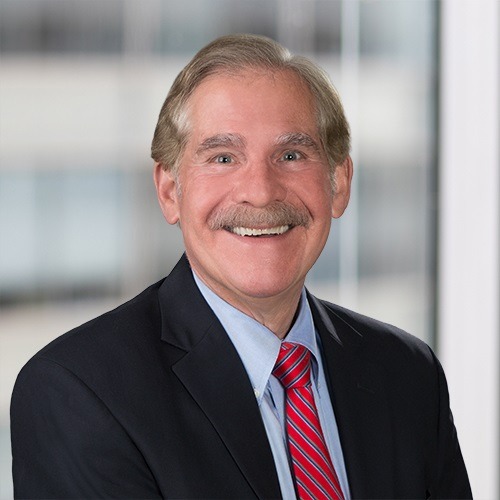
Alan C. Horowitz, Esq., is a partner at Arnall Golden Gregory LLP, where he focuses his legal practice on regulatory compliance for skilled nursing homes, hospices and home health agencies and manages cases where the Centers for Medicare and Medicaid Services (CMS) has imposed an enforcement action. He is a former assistant regional counsel Office of the General Counsel, U.S. Department of Health and Human Services. As counsel to CMS, he was involved with hundreds of enforcement actions and successfully handled appeals before administrative law judges, the HHS Departmental Appeal Board and in federal court. He also has clinical healthcare experience as a registered respiratory therapist and registered nurse. He can be reached at alan.horowitz@agg.com.
Related Articles
Topics: Alan C. Horowitz , Clinical , Featured Articles , Leadership , Policy , Training







